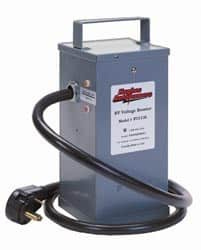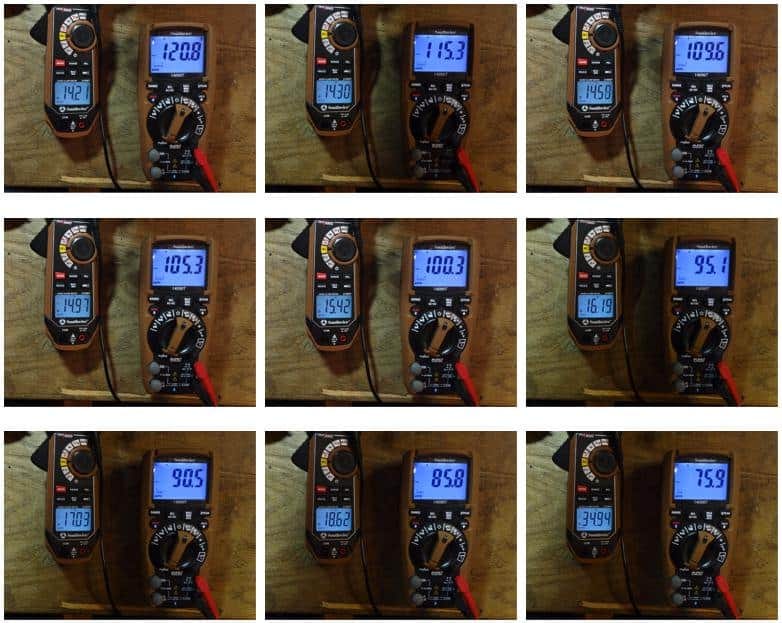Hughes Autoformer Study: Part 2
As promised, here's Part 2 of my study on exactly how the Autoformer works and why it became a code violation in campgrounds
Dear Readers,
If you subscribe to my RVelectricity blog you’ve already read the first part of my Hughes Autoformer test. If you haven’t seen it, please read Part 1 HERE. For you casual observers this information may not sink in right away. But for any readers who have an electrical background this is going to read like a mystery novel.
Disclaimer: Hughes has not offered to pay me for this test, and I neither asked for nor received any compensation. But Hughes did send me a 30-amp version of the Autoformer for testing with the understanding that I have 100% control over all tests and publication of my data. I have offered to share my results with them after the testing is done. So you can be assured that whatever data I gather and conclusions I come to are unbiased. In short, I don’t have a horse in this race. It’s just an interesting engineering question to answer.
What’s goin’ on?
Well, here’s the reason why I’ve set up this test in the first place. Hughes has a product they call an Autoformer, which is basically a low-voltage/high-current transformer (10 volts or so at 30 or 50 amperes) that’s connected in buck/boost mode with a relay to be able to boost low voltage from a campground pedestal up to a higher level.
Why is this needed?
The theory is that since air conditioner compressors draw more current as the AC voltage decreases, if the campground pedestal gets down to 100 volts or so, then you’ll burn up the compressor in your expensive rooftop air conditioner. The Hughes Autoformer product boosts any low voltage from the campground pedestal by 10% or so, which they claim keeps air conditioners cool and safe.
What’s the controversy?
Well, any transformer that can boost the voltage does it with an equal increase in amperage draw from the power source. So boosting the voltage going to a camper by 10% would also increase the current draw on the pedestal (and the campground) by a 10% increase in amperage. That’s exactly how it works for resistive loads like your water heater’s electric element.
This basic equation has caused the NEC to ban booster transformers of any kind in campgrounds. Their theory is that a voltage boosting transformer uses additional power that can further stress an already overloaded campground electrical system. Yes, as of the 2020 NEC, Hughes Autoformers (and any other voltage boosting transformers) are a code violation in U.S. campgrounds.
What is Hughes’ theory?
However, rotating inductive loads like air conditioner compressor motors have a more complex volt/amp relationship dependent on motor load, Locked Rotor Amps (LRA), flux field slip angle, etc.
So the position from Hughes is that their Autoformer product will reduce the overall load on the campground because their product increases the efficiency by boosting the voltage going to the air conditioner, which in turns draws less current. They say it may actually decrease the overall current needed from the campground even adding in the 10% extra amperage loss caused by the transformer voltage boosting action.
Why am I performing this first test?
Well, to know what the Hughes product does I needed to get some baseline data on exactly how air conditioners operate at low voltage. So I did the simplest test possible, without their Autoformer in the circuit.
However, there’s one unaccounted variable in this first proof of concept test. Since I was just finishing up a round of experiments with a SoftStartRV™ still connected to my Dometic Penguin II air conditioner, that’s what I plugged into my big 3,000-watt VARIAC® for the first run.
Here are the amperage measurements with the compressor running at the following voltage steps without the Autoformer, but with a SoftStartRV connected. Note that the air temp for the air conditioner was in the high 60s at the time of this first test.
120 volts = 12.06 amps
115 volts = 11.15 amps
110 volts = 10.86 amps
105 volts = 10.90 amps
100 volts = 10.93 amps
95 volts = compressor shut down
What the heck?!!!
Even though all my EE books and urban myths say that air conditioner compressors will draw more amperage as the voltage goes down to 100 volts, that’s the opposite of what I’m seeing with this first test. While it’s drawing just over 12 amperes at 120 volts, when I run the VARIAC down to 100 volts, the current DECREASES to 10.93 amperes instead of INCREASING! That’s a 10% DECREASE in current when the voltage is reduced from 120 volts down to 100 volts.
Everything you know is wrong…
I published this first round of data just to gauge interest with my readers, and boy did it generate a lot of discussion. If my data was correct, then there’s some other mechanism allowing the current to decrease with a lower voltage rather than increase like all the textbooks say. The only possible explanation would be the SoftStartRV behaving in a way that was unanticipated by its designer.
Now, it’s also possible there was a mistake in my measurement protocol, or perhaps the Dometic Penguin II has some sort of additional circuitry that allows the current to reduce gracefully rather than increase and burn up the compressor, or maybe there’s something else going on that I don’t understand. That’s what I’m going to figure out.
Second verse, with a chord change
So just yesterday I reconnected this test setup, but removed the SoftStartRV controller and reconnected the stock starting capacitor for the Dometic air conditioner. And you can see the pictures below for the current readings at 5 volt intervals. Finally, the air conditioner amperage was behaving exactly as predicted by every engineering textbook and theory that I’ve read over the last 50 years.
As you can see from this picture sequence, the amperage is now increasing from 14.21 amps to 18.62 amps as I decreased the voltage using a VARIAC from 120.8 volts down to 85.8 volts, just as predicted by induction motor theory. Oh, when I tried to get down to 80 volts, the current shot up to 35 amps and the voltage dragged down to 76 volts right before the 25-amp fuse in the VARIAC blew with a big pop. Yes, I do blow a lot of fuses…
What does this all mean?
Heck if I know. Is this from some Power Factor change I’m not metering for? Does the SoftStartRV modify the run current as well as the starting current? Did I just have a senior moment and write down the numbers incorrectly for Test #1? Or is there some other effect that can be exploited to help protect air conditioners in low voltage situations? And just where does the Hughes Autoformer fit into all of this? Standby for my next experiment when I’m going to reconnect the SoftStartRV controller and repeat the exact same reduced voltage sequence.
To Infinity, and Beyond…
Now that my lab is fully functional I can do this type of experiment as well as a lot more important (and sometimes dangerous) ones that can help RV owners as well as the RV industry in general. I just don’t know what I’m going to find, which is the best type of science you can perform. I’m not trying to prove a theory, I’m trying to understand it and look for additional variables.
See you with more results in a few weeks. In the meantime, let’s play (and experiment) safely out there….













Crazy stuff, isn’t it? I work hard at gathering empirical data without a bias. So I try not to guess which ways the numbers should go until I have a full set of data. I was a bit stunned when I saw the trend.
I’ll publish Part 3 next week which will drill down into the mystery even further.
I also thought the current would have increased when you dropped the voltage then I remembered you had the soft start in the circuit. I believe you are seeing why utilities use capacitor banks on distribution lines and also large inductive customers use them at their facilities to help control over current draw. VARS -Volt Amp Reactive, voltage and current are out of phase with each other. You introduced the capacitor bank that is going to effect the power factor.